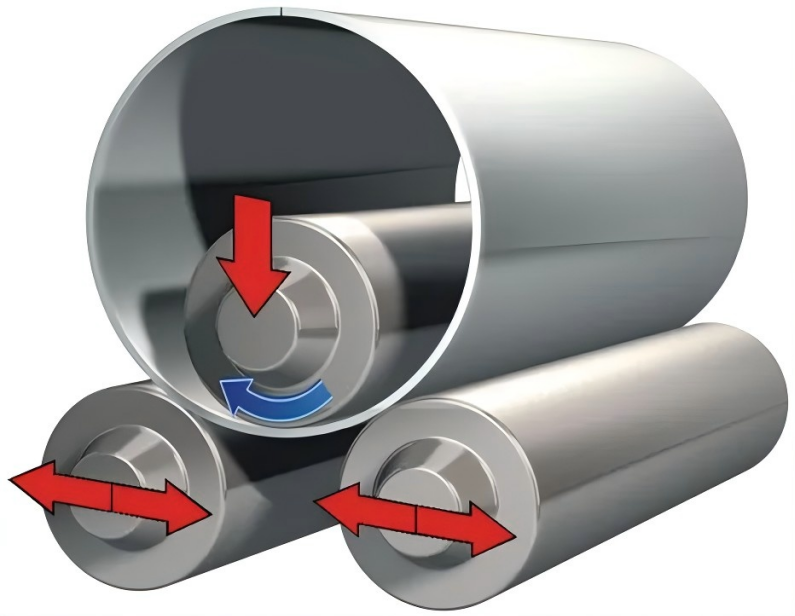Documentation Hub
Comprehensive technical manuals and guides to help you master HARSLE machines and optimize your metalworking efficiency
How to Choose the Right Size for a Rolling Machine?
When metal fabricators ask me how to pick the right size for a rolling machine, they usually want a simple answer such as “just match the plate thickness.” Unfortunately, sizing a plate or section roller is a little more nuanced. To save you from costly over- or under-sizing, I’ll walk through every factor that matters, from material strength to future production goals, so you can invest with confidence.
Understanding Key Parameters When Sizing a Rolling Machine

Material Thickness and Yield Strength
The first—and biggest—driver of the right size for a rolling machine is the combination of plate thickness and yield strength. A machine that can roll 10 mm mild steel may struggle with 8 mm stainless because stainless yields at roughly double the stress. Always confirm both thickness and strength before looking at capacity charts.
Minimum Rolling Diameter Requirements
Every roller has a limit on how tight it can form a cylinder without overstressing the top roll. Calculate the smallest inside diameter you expect, then pick a machine rated to at least 1.1 × that value. Long-tail keyword tip: search “calculate minimum diameter rolling machine” to find conversion formulas.
Working Width Needed

Choose a working width that matches or exceeds the maximum part width you plan to run. If you specialize in silos or HVAC ducts, an extra 300 mm of width often prevents edge distortion when rolling cones.
Number of Rolls and Geometry

A four-roll machine of the same size usually handles tighter diameters than a three-roll model because the extra pinch roll keeps the plate under better control. Decide whether the added cost is worth the flexibility.
Guide to Choosing the Right Size for a Rolling Machine
Step 1: Gather Your Project Specifications
I start by listing every product we roll today and expect to roll in the next five years—material, thickness, width, diameter, and quantity. Without these numbers, “choosing rolling machine capacity” is guesswork.
Step 2: Check Capacity Charts and Safety Margins
Manufacturers publish charts linking thickness, width, and minimum diameter to a specific model. Pick the line that meets or slightly exceeds your job spec, then add a 10 % safety margin to cover harder lots of material, tool wear, or minor misalignment.
Step 3: Balance Machine Size with Budget and Floor Space

A bigger roller is safer but costs more and takes up valuable shop real estate. If you rarely roll your thickest material, consider outsourcing those occasional jobs rather than upsizing your entire machine.
Step 4: Verify Power and Automation Options
Hydraulic drives are standard on mid- and heavy-duty plate rollers, but for high-strength alloys you might need an oversize main motor. Advanced CNC controls also let me program variable crowning and cone angles, increasing productivity on large series.
Common Sizing Mistakes and How to Avoid Them
Underestimating Yield Strength
Many buyers focus on thickness only. Always cross-check the yield strength vs. rolling machine size so the top roll doesn’t deflect, creating a barrel-shaped cylinder.
Ignoring Cone or Ellipse Rolling Needs
Rolling cones or ovals puts extra force on one edge. Add 15–20 % capacity if these shapes make up more than a quarter of your work.
Forgetting Future Growth
If you expect to scale production, buy the next capacity level today. The incremental price difference is usually lower than the downtime and logistics cost of replacing a too-small machine later.
FAQs
What happens if I oversize my rolling machine?
While a larger model safely handles all parts, extremely small diameters may become harder because the top roll radius is larger. Oversizing also means higher purchase and operating costs.
How do I calculate the minimum diameter for high-strength steel?
Use the formula D = k × t × (σ<sub>y</sub>/σ<sub>ref</sub>), where D is minimum diameter, t plate thickness, and σ<sub>y</sub> material yield. The reference yield σ<sub>ref</sub> is typically 250 MPa for mild steel. Most vendors publish simplified tables if math isn’t your thing.
Can one rolling machine handle aluminum, stainless, and carbon steel?
Yes, but size it for the strongest material. Aluminum will roll easily; stainless will use most of the machine’s rated capacity.
Do four-roll machines always roll smaller diameters?
Not always, but the extra pinch point reduces plate slip, letting you approach the published minimum diameter more consistently.
How often should I recalibrate roll parallelism?
Check alignment every 1,000 operating hours or whenever you see taper on the finished cylinder. Misalignment can steal 5–10 % of your useful capacity.
Conclusion and Next Steps
By collecting accurate material specs, referencing manufacturer charts, and leaving room for future growth, you can choose the right size for a rolling machine without overspending.
Invest once, roll right, and watch your fabrication efficiency soar.













